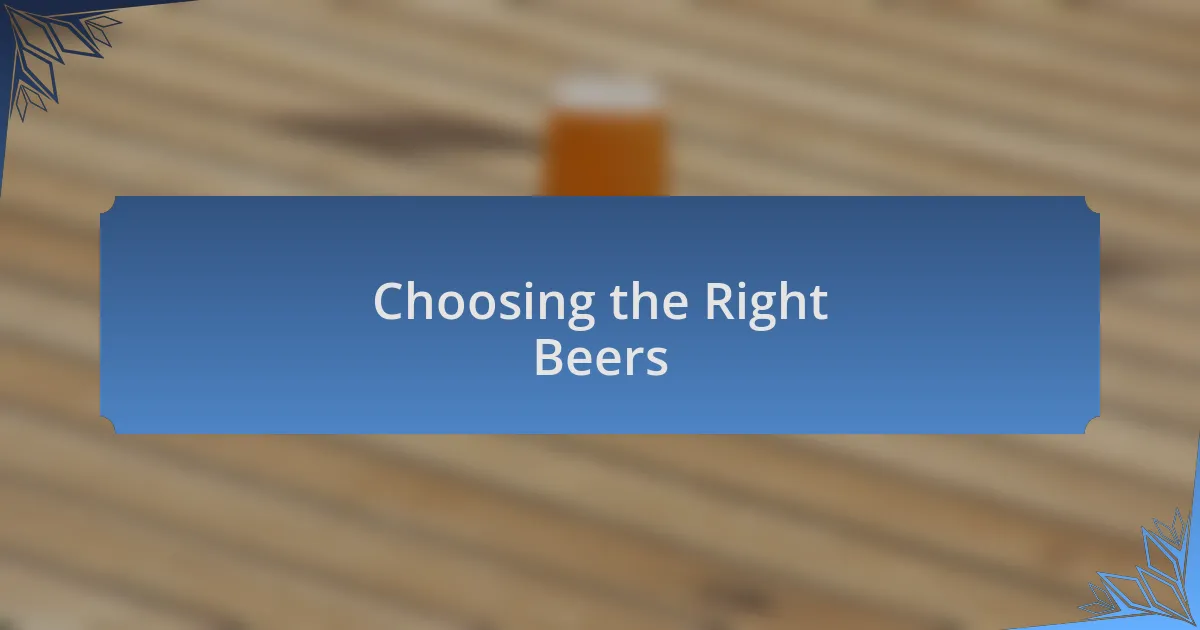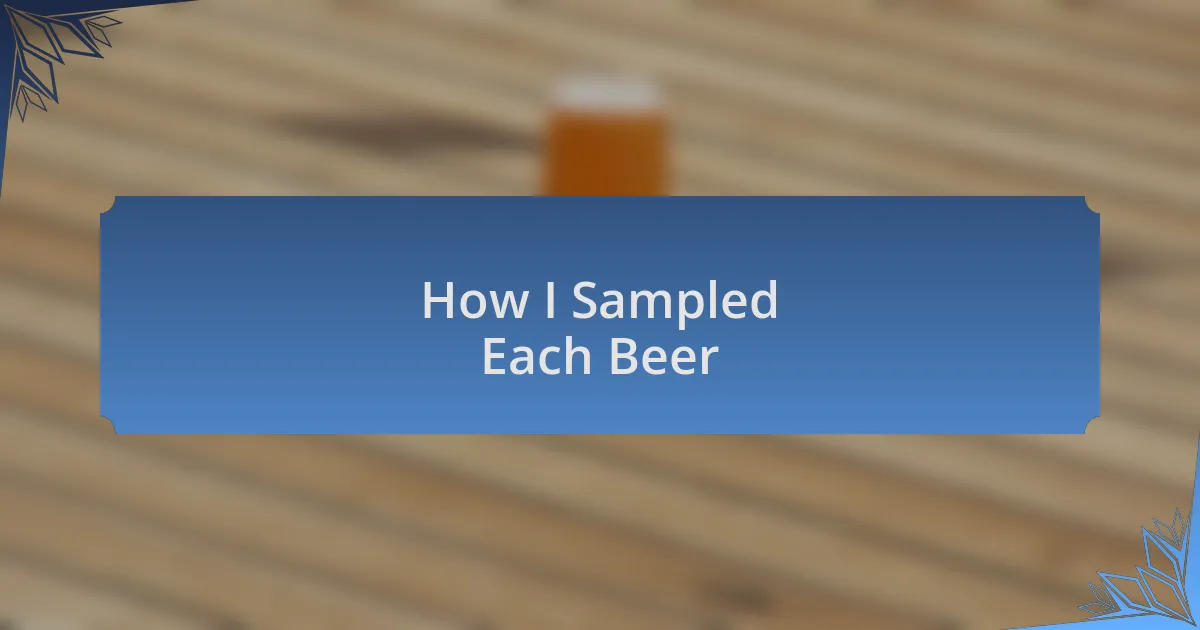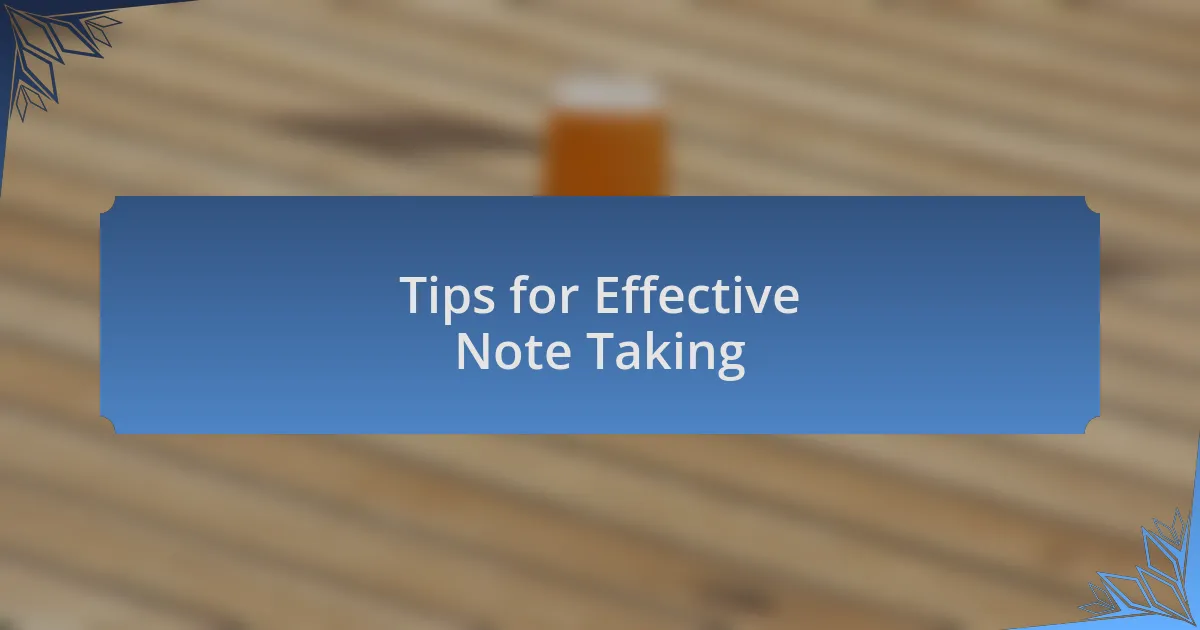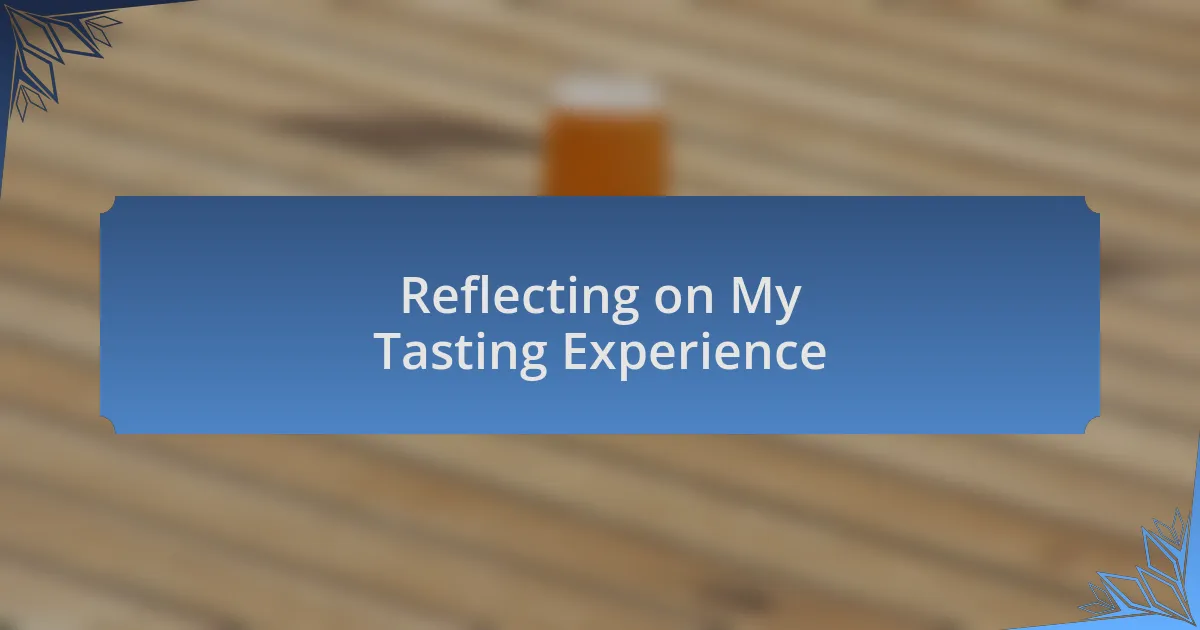Key takeaways:
- Craft beer festivals create a vibrant community atmosphere while showcasing unique breweries and flavors.
- Maintaining beer tasting notes enhances appreciation for the brews and serves as a guide for future tastings.
- Preparation and a tasting strategy, including researching breweries and organizing thoughts, can greatly improve the festival experience.
- Engaging with brewers and reflecting on tasting experiences adds depth to the understanding and enjoyment of each beer.

Understanding Craft Beer Festivals
Craft beer festivals are a wonderful way to immerse yourself in the world of brewing. I remember my first festival; the air was filled with laughter, clinking glasses, and the diverse aromas of hops and malt. It’s a sensory experience that not only introduces you to a wide array of brews but also fosters a sense of community among fellow enthusiasts.
Each festival showcases unique breweries, often highlighting local artisans who pour their passion into every pint. Have you ever chatted with a brewer about their latest creation? I find that those personal stories make the tasting experience more profound, connecting you to the craft on a deeper level. This is one of the many joys of attending such events, where every sip carries a little piece of the brewer’s journey.
With tastings, food pairings, and live music, these festivals transform an ordinary day into an extraordinary celebration of craftsmanship. It can be overwhelming, though, with so many choices vying for your attention. I often remind myself to pace my tasting; after all, savoring each flavor is just as important as trying as many options as possible. What’s your strategy for tackling such bounty?

Importance of Beer Tasting Notes
Keeping track of beer tasting notes is essential for savoring the myriad flavors and aromas that craft beers offer. I remember attending a festival last summer, trying a wild ale that completely blew me away with its tartness and fruity finish. Without jotting down my thoughts immediately, I would have struggled to differentiate it from the other beers I tried that day. This process not only enhances the tasting experience but also builds a personalized record that I can refer back to later.
Writing detailed notes encourages a deeper appreciation for the subtleties in each brew. When I take the time to describe the notes of caramel in a nut brown ale or the floral hints in a pale ale, I’m retraining my palate and sharpening my senses. Have you ever revisited a beer after a few months and found completely new aspects to enjoy? It’s like rediscovering an old friend.
Moreover, these notes can serve as valuable guides when exploring new breweries or attending future festivals. I often find myself flipping through my notes before heading out to a new event, helping me to remember which styles or breweries I adored and which I’d want to avoid. It transforms the daunting task of navigating a festival into an exciting adventure informed by past experiences. How do you approach picking your brews at a festival?

My Preparation for the Festival
Preparing for the craft beer festival is an exhilarating experience for me. I take time to research the breweries that will be attending and the styles they offer, making a list of the ones I’m eager to try. Last year, I discovered a small brewery known for its experimental sour beers, which ended up being the highlight of my day. Isn’t it exciting to anticipate those unique finds before the festival even begins?
As the event approaches, I start organizing my tasting strategy. I jot down my notes on the beers I want to remember for later, creating a clear plan that guides my tasting journey. This not only saves me from the chaos of overwhelming choices but also allows me to pace myself. Have you ever found yourself rushing to try everything only to forget the great ones? Trust me, having a game plan changes the entire experience.
On festival day, I pack essentials like a pen and a notepad to capture every detail while the flavors are still fresh in my mind. I also bring along a reusable cup—something that adds a personal touch to my tasting sessions and reduces waste. There’s something comforting about having my tools ready; it makes the entire day feel like a rewarding adventure. What tools do you find invaluable during your own beer tasting excursions?

Choosing the Right Beers
Choosing the right beers at a festival can be a delightful challenge. My approach often involves focusing on styles that intrigue me. For instance, I once stumbled upon a barrel-aged stout that had hints of coffee and chocolate—flavors I adore. It became an instant favorite, reminding me that sometimes the best discoveries come from following my cravings rather than just popular recommendations.
I also pay attention to the brewery’s background and their unique offerings. During one festival, I decided to explore a newer brewery known for its innovative IPAs. The first sip transported me with its burst of citrus and pine, and I found myself striking up conversations with the brewers, learning about their process and inspiration. Isn’t it fascinating how the story behind a beer can enhance its taste?
At times, I rely on recommendations from fellow festival-goers, which often uncovers hidden gems. I remember chatting with a couple who guided me to a Belgian witbier, something I wouldn’t have chosen on my own. That experience taught me the power of community; sharing tastes and preferences can lead to coordinates that you might never explore alone. So, who have you met at festivals that reshaped your tasting experience?

How I Sampled Each Beer
Sampling each beer at the festival was an adventure in itself. I made it a point to take notes after each tasting, jotting down flavors, aromas, and any unique characteristics that stood out. There was a moment when I tried a wild ale that had a funky aroma; it was intriguing, prompting me to linger on those first few sips to fully appreciate its complexity.
I also used a systematic approach by creating a scoring system for each beer, considering aspects like aroma, taste, mouthfeel, and finish. One standout was an imperial IPA that felt like a punch of tropical fruit on my palate, and I remember feeling an exhilarating rush as I savored it. Did I dare to score it higher than the barrel-aged stout I loved so much? Moments like these sparked a playful yet serious debate in my mind about what makes a beer truly remarkable.
Engaging with the brewers while sampling their offerings was essential to my experience. There was a point during my tasting session with a small family-owned brewery that I learned about their use of locally sourced ingredients. As they described their methods, the passion in their voices transformed the simple act of sipping into a meaningful connection with the beer. Have you ever felt that a story behind a beer changes the way you feel about it? For me, it certainly added layers to my tasting notes, making each beer a part of a larger narrative.

Tips for Effective Note Taking
When it comes to effective note-taking during a beer tasting, I find that using a consistent format really helps. I typically create a template with designated sections for aroma, taste, mouthfeel, and overall impression. This simple structure not only makes it easier to capture my thoughts but also allows me to track my impressions more systematically. Have you ever looked back at your notes and found them a bit chaotic? Trust me, a clean format can save you from confusion later on.
Another tip I swear by is writing immediately after a tasting. The moment the flavors hit your palate is when your impressions are freshest. I learned this the hard way after an afternoon of tastings; I thought I could rely on my memory. As I looked at my scribbles later, I realized I’d forgotten crucial details about that velvety porter that had captivated me. So, don’t hesitate—grab that pen as soon as you finish your sip!
Lastly, don’t shy away from adding personal touches to your notes. In my experience, little anecdotes or emotional reactions can turn a simple observation into something memorable. For instance, I once noted how a rich stout reminded me of cozy winter evenings by the fireplace. These connections enrich my understanding and enjoyment of each beer, transforming my notes into a personal narrative of my tasting journey. Why not let your notes tell your own story?

Reflecting on My Tasting Experience
When I sit down to reflect on my tasting experiences, I often find myself revisiting the moments that stood out the most. One time, I enjoyed a citrusy IPA that instantly transported me back to a sun-soaked day at the beach, and writing these sensory connections helps me anchor my memories. Isn’t it fascinating how a single sip can evoke such strong emotions?
As I pore over my notes later, I can almost hear the lively chatter of fellow tasters and the clinking of glasses in the background. Reflecting on these lively atmospheres adds an extra layer to my tasting experience; it’s not just about flavors but also the camaraderie shared in those moments. I remember sharing a surprisingly spicy lager with a friend who was new to craft beer. Her initial shock gave way to delight, and capturing that shift in my notes truly highlights the joy of exploration.
Sometimes, I even find myself wondering what I would rate certain beers if I tasted them again a few months later. Tastes evolve, and so do our preferences, which makes reflection all the more valuable. Looking back, I can see how my palate has matured, which encourages me to keep tasting and learning. Isn’t it thrilling to think about how each tasting experience shapes my understanding of craft beer?